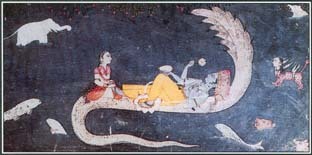» Site Navigation

0 members and 671 guests
No Members online
Most users ever online was 47,180, 07-16-2025 at 05:30 PM.
» Today's Birthdays

» Stats

Members: 75,916
Threads: 249,118
Posts: 2,572,199
Top Poster: JLC (31,651)
|
-
BPnet Veteran


Re: A few Pacman frog ?'s..
D3 powders are more important for nocturnal animals that don't receive UVB lighting, and pacmans are usually considered nocturnal.
The supplementation schedule is very dependent on the frog's age. If you are receiving a smaller baby pacman frog, then supplement ever other feeding. For older frogs try every week. Also make sure to use a vitamin supplement alongside the calcium. For babies supplement with vitamins once a week, and adults once a month or so.
For staples try a split between these items: Crickets, Nightcrawlers, mealworms. Younger frogs are best left with mostly invertebrate prey. Older frogs can have the occasional small fish or small rodent. Some people steer clear away from fish, but that's up to you. Crickets and mealworms should be gut loaded. If you have a frog, at least a third of it's diet should be gut loaded crickets. I know, they are really annoying and smell bad. Don't count out canned though, some pacmans take to them.
Also, have the setup ready for your frog. Make sure temps and humidity are where they need to be. Make sure it is not too large for the frog you get. Only a larger pacman should be in a 10 gallon tank. Try covering the enclosure with paper on some sides to increase its sense of security. Let the frog adjust to its new home for at LEAST a week without any major disturbances. When trying to feed it, don't hassle it. If it doesn't have a quick response then budging it with food to elicit a reaction will stress it out. Some people use tongs, some use just let the frog hunt. It depends.
When it becomes well adjusted and feeding well, you will need to look into chytrid treatment, as almost all frogs in pet stores have it.
The more questions you ask prior to getting your frog, the more you'll know
Ride the snake, ride the snake/ To the lake, the ancient lake, baby/ The snake is long, seven miles/ Ride the snake...he's old, and his skin is cold... (The End, The Doors)
_____________________________________________________________________________
Ball python 1.1 Leopard Gecko 1 Crested Gecko 1 African Side Neck Turtle 0.1 Giant Plated Lizard 1 Ribbon Snake 0.0.1 Corn Snake 0.0.1 Tiger Salamander 0.0.1 Metallic Pinktoe Tarantula 0.1 Black Lab/Pit Bull mix 1

-
 Posting Permissions
Posting Permissions
- You may not post new threads
- You may not post replies
- You may not post attachments
- You may not edit your posts
-
Forum Rules
|











 Reply With Quote
Reply With Quote